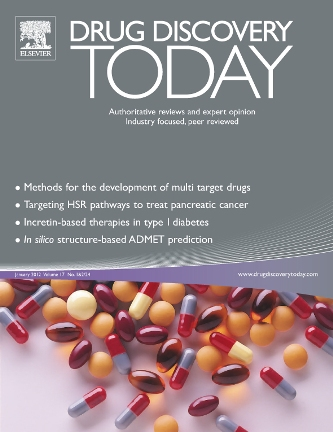推进眼部基因治疗:一种增强传递、摄取和基因表达的机器学习方法
IF 6.5
2区 医学
Q1 PHARMACOLOGY & PHARMACY
引用次数: 0
摘要
眼部基因治疗为治疗各种眼病提供了一种很有前途的方法,其核心是转染过程,包括传递、细胞摄取和基因表达。本研究探讨了影响治疗成功的解剖和生理障碍,如眼睑、泪膜、结膜、角膜、巩膜、脉络膜和视网膜。提出了一种三步机器学习方法。第一步通过整合眼部基因治疗产品的分子特征、眼屏障特性和患者人口统计学来预测基因递送效果。第二步预测细胞摄取率,分析产品渗透和细胞相互作用。最后一步预测基因表达水平,考虑到核酸类型和内体逃逸等因素。建议使用人工神经网络模型来捕捉复杂的非线性关系,增强我们对治疗和生物相互作用的理解。本文章由计算机程序翻译,如有差异,请以英文原文为准。

Advancing ocular gene therapy: a machine learning approach to enhance delivery, uptake and gene expression
Ocular gene therapy offers a promising approach for treating various eye diseases, centered on the process of transfection, including delivery, cellular uptake and gene expression. This study addresses anatomical and physiological barriers, such as the eyelids, tear film, conjunctiva, cornea, sclera, choroid and retina, affecting therapeutic success. A three-step machine-learning approach is proposed. The first step predicts gene delivery efficacy by integrating molecular characteristics of the ocular gene therapy product, ocular barrier properties and patient demographics. The second step predicts cellular uptake rates, analyzing product penetration and cellular interactions. The final step forecasts gene expression levels, considering factors like nucleic acid type and endosomal escape. An artificial neural network model is recommended to capture complex, nonlinear relationships, enhancing our understanding of therapeutic and biological interactions.
求助全文
通过发布文献求助,成功后即可免费获取论文全文。
去求助
来源期刊

Drug Discovery Today
医学-药学
CiteScore
14.80
自引率
2.70%
发文量
293
审稿时长
6 months
期刊介绍:
Drug Discovery Today delivers informed and highly current reviews for the discovery community. The magazine addresses not only the rapid scientific developments in drug discovery associated technologies but also the management, commercial and regulatory issues that increasingly play a part in how R&D is planned, structured and executed.
Features include comment by international experts, news and analysis of important developments, reviews of key scientific and strategic issues, overviews of recent progress in specific therapeutic areas and conference reports.
 求助内容:
求助内容: 应助结果提醒方式:
应助结果提醒方式:


